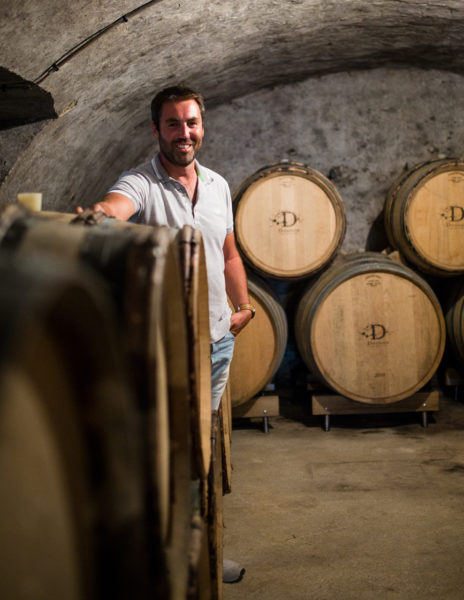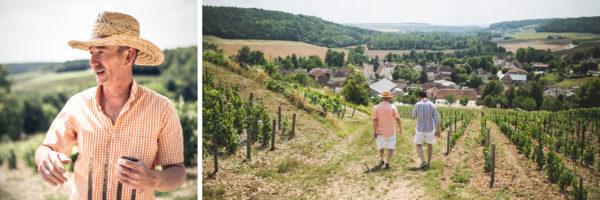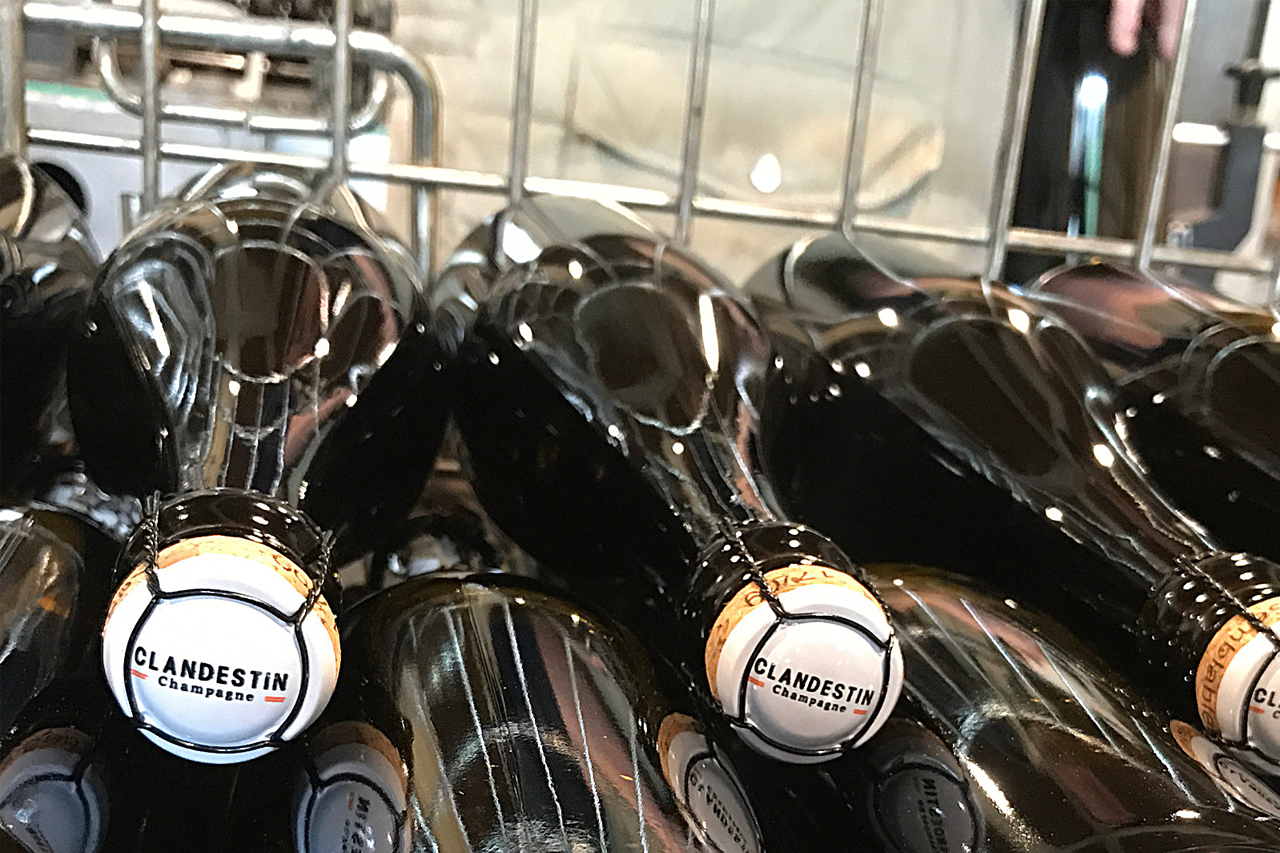

By Jon-David Headrick
The Aube region of France seems to be in an eternal tug of war between Champagne and Burgundy, with 40,000 French soldiers being sent to the region to help quell the violence as recently as 100 years ago. Now solidly part of Champagne, the Aube, and its wine region of the Côte des Bar, was part of Burgundy for centuries, and the traditions, architecture, cuisine, and winemaking practices show this today.

The landscape and typical soils of the Aube.
But perhaps more importantly for our purposes, although the Côte des Bar is firmly ensconced in the Champagne appellation, the soil that runs underneath the vines runs south to Chablis, forming the bedrock on which the Premier and Grand Cru vineyards of this revered appellation are based. Just 40 to 60 minutes north of the Chardonnay hills of Chablis, all planted on Kimmeridgian and Portlandian limestone, you find more slopes of Chardonnay and Pinot Noir planted on this same ocean bed chalk, but this time the grapes are vinified with bubbles and called Champagne.
Although the soil is 150 million years old, the winemaking spirit of the Aube is young and fresh, with new blood being added every year. For the last few decades, most growers have grown grapes to be shipped north and added to the house blends of large Champagne houses with famous names, but today we find many young growers going to the bank to ask for loans to get started on this world-class bedrock. Most of them, and ALL of our growers from the Aube, trained in Burgundy and take many winemaking cues from this neighboring region to the south. Because land is so insanely expensive even in this more rural corner of Champagne, these young growers sign long-term leases on parcels to farm but perhaps never to own. This micro-negociant model, made famous in Bordeaux and Burgundy, is how to get started in Champagne without inheriting 10 million euros worth of vineyards.

Davy Dosnon
One such example of this is Davy Dosnon, a young man who inherited 2 hectares of vines in the village of Avirey-Lingey in the Aube. Champagne Dosnon is such a minuscule estate that there isn’t a sign above the gate announcing the presence of a winery, but once through the portal, a bevy of Kimmerdgian jewels await. From his 2 hectares (plus another 3 that he leases), Davy fashions a small range of luxurious Champagnes that carry both the precision and minerality of the Kimmeridgian soil and the enrobing qualities of Puligny-Montrachet barrels. These are mostly single varietal bottlings from parcels where no dirt is present on the surface. The lunar landscape of ocean bedrock makes the vines seem as if they are planted on white earth. Having trained in Meursault, Davy still looks south for winemaking inspiration instead of north to the Côte des Blanc or the Marne. Chablis is so close that you can zip down for dinner if you like. The Champagnes from Dosnon are for wine-lovers who want some bubbles in their Côte d’Or white Burgundy.

Bertrand Gautherot in his vineyards above Buxières-sur-Acre
Just 20 kilometers to the northeast, you find the lovely village of Buxières-sur-Arce hidden among the Portlandian-topped hills of the Aube. Champagne Vouette et Sorbée, run by visionary winemakers Bertrand & Hélène Gautherot, and now with the help of their daughter Héloïse, has become one of the most sought-after estates in Champagne, in large part because of the incredible precision and intensity of the wines. When visiting Vouette, you’ll be asked to climb the steepest hill I’ve ever seen in Champagne to reach the vineyards. Along the climb, you’ll walk through millions of years of geological history. Stop and look for tiny oyster shells, or massive ammonites, before reaching the Portlandian capstone on which the top parcels are planted. Farmed biodynamically, these vineyards are alive and integrate seamlessly with the surrounding forests. The wines at Vouette are always from one site, from one year, and bottled with zero dosage. The purity is astounding, but wait a few years, and the intensity builds to a brilliant crescendo in the bottle.
And finally, Champagne Clandestin, our newest Côte des Bar grower, comes directly out of the Vouette tradition. Benoit Doussot, a Meursault-trained winemaker who has worked at Vouette for several years alongside Bertrand and Hélène, has opened up shop next door to Vouette with his own micro-negociant estate called Clandestin. The estate focuses on small, out-of-the-way parcels and expositions (clandestin means “hidden” or “secret”) that many traditional winemakers eschew. Aging is in barrel and follows closely the training in Meursault that Benoit received before moving north to Champagne. The Champagnes appeal to purists with lovely minerality, cut, and precision. Because of the insistence on harvesting perfectly ripe grapes (which is not generally the case in Champagne), the wines can be bottled with no dosage, giving room for the oceanic terroir to really shine through. These are show-stopping Champagnes of the highest order.

Photography by Steven Spanbauer, and Leigh-Ann Beverly at Bona Fide Productions, used with permission.